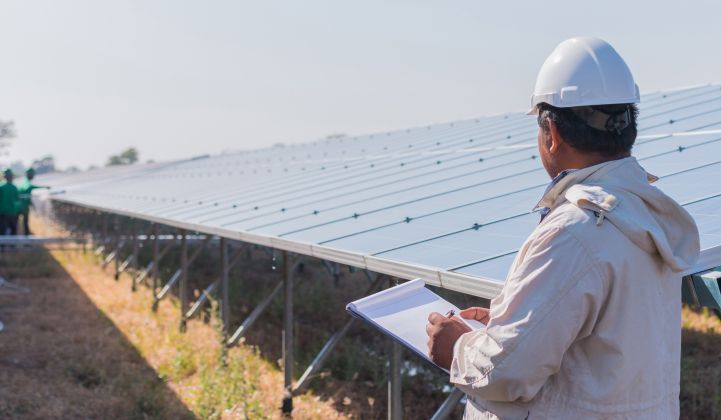Midwestern utility Alliant Energy plans to build up to 1 gigawatt of solar in its Wisconsin service territory by 2023, according to a plan it released last week.
While light on details, the solar plan will help Alliant reach goals it laid out last year to cut carbon emissions 80 percent and ramp up the renewable portion of its energy mix to 30 percent by 2030. In 2018, renewables accounted for 20 percent of Alliant’s portfolio while coal made up 31 percent and natural gas accounted for 42 percent. The investor-owned utility serves about 15 percent of Wisconsin and also has customers in Iowa.
As Alliant adds solar, it plans to entirely excise coal from its portfolio in the coming decades — a growing trend across the industrial Midwest (it will also close its coal ash ponds by the end of 2023). Xcel Energy, which serves Minnesota in addition to several other Midwestern and Western states, in December said it would achieve 100 percent carbon-free electricity by 2050. More recently, the Northern Indiana Public Service Company (Nipsco, a utility serving parts of Indiana) put out a request for proposals seeking 2.3 gigawatts of solar or solar-plus-storage.
While the solar boom once favored states such as California, Arizona and the Northeast — those with the best solar resources or most favorable policies — the Midwest is starting to pick up on the transition. There is currently less than 100 megawatts of solar capacity installed in Wisconsin currently, according to Wood Mackenzie Power & Renewables.
Analysts have been expecting installations to pick up in 2020. “It’s part of a trend we’ve been calling out for a bit now,” said Ravi Manghani, head of solar research at WoodMac. “Declining solar costs have made it the most cost-effective generation resource, even in the Midwest, surpassing wind in that category.”
Levelized cost of energy data from WoodMac shows both wind and solar now beating new-build combined-cycle natural gas plants, with solar slated to undercut wind prices in 2022 in Wisconsin.
More utilities are making the jump now, Manghani said, because of the coming phase-down of the federal Investment Tax Credit for solar.
“We anticipate more utilities will push forward with their solar plans,” said Manghani. “If not this year to capture the 30 percent [ITC], definitely in 2020 and 2021.”
For large-scale projects, 2019 is the last year to get the full ITC before it gradually steps down to a permanent 10 percent in 2022.
In addition to big buildouts of renewables, Alliant plans to spend $1.8 billion through 2020 on updating its power grid to interface more effectively with solar and other renewables as well as electric vehicles and batteries.
Like Nipsco, Alliant says transitioning to more renewables now offers “the best economic value." And like its peer in Indiana, Alliant foresees the broader Midwestern wholesale market helping maintain reliability as it transitions away from traditional fossil fuel baseload resources.
Though Alliant’s current plan covers only Wisconsin, the utility said it will begin making updates to its Iowa service territory plan in early 2020. The utility has also set a target of adding 680 megawatts of wind to its portfolio through 2020 across both states, as well as to sign more than 1 gigawatt worth of renewable power-purchase agreements in 2020.
In its announcement, Alliant noted that its targets are more ambitious than those laid out in the Paris climate agreement. That agreement was designed to be strengthened in sequential steps over time, however, and some utility pledges have garnered criticism for not moving quickly enough on transitioning to renewables.
Though Alliant is adding wind and solar in the next couple of years, it also plans to add a 730-megawatt gas plant to its generation portfolio. Stretching the transition into 2050 also affords the utility plenty of room to watch the market and make measured moves as solar prices continue to fall.




